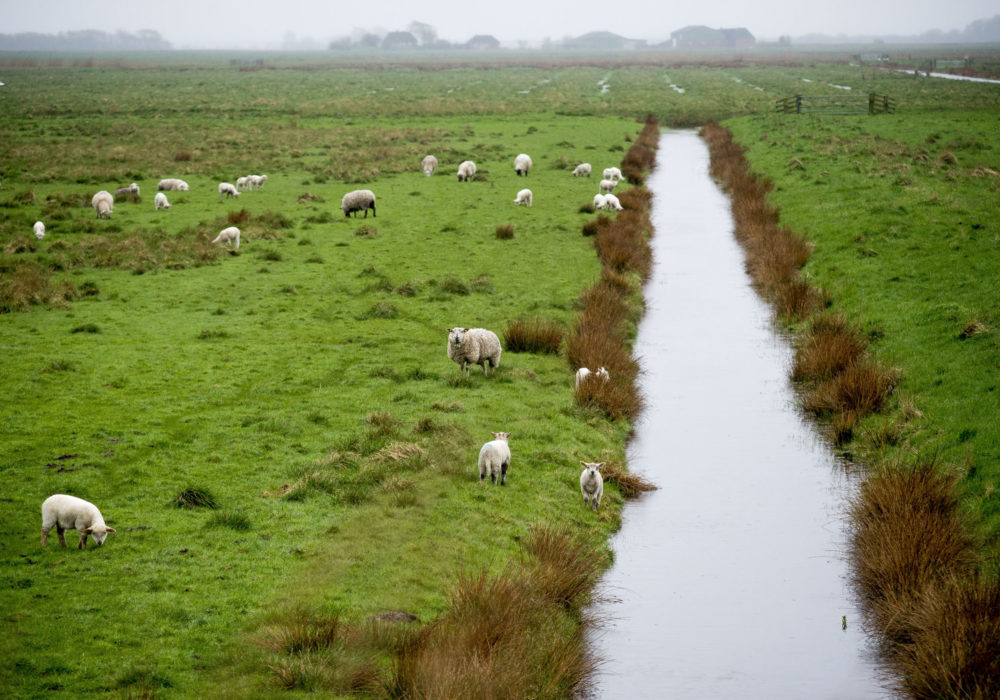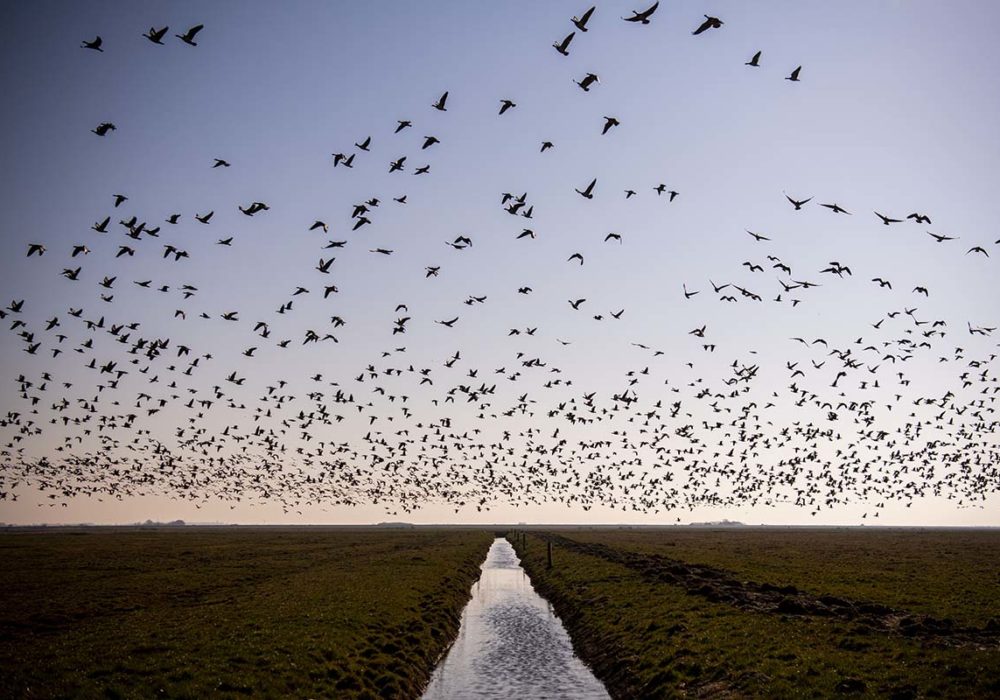BIRD LIFE
Tøndermarsken is one of Denmark’s most diverse bird habitats.
The special cultural landscape shaped by human hand, and the many wetlands are excellent breeding places for fish and, especially, birds.
Tøndermarsken teems with such outstanding bird life that several areas are nominated bird sanctuaries to protect the birds’ breeding and feeding grounds.
Migratory and indigenous birds
Tøndermarsken is famous for the wide variety of birds that flock here. Geese arrive in thousands, e.g. barnacle, pink-footed, greylag and greater white-fronted geese. Every species of duck and wading bird found in Denmark can be seen here at some time of the year as they migrate through this area, or feed and rest in the marshes.
Many birds of prey are regular visitors to the area, including peregrine falcons, merlins, rough-legged buzzards, hen harriers and white-tailed eagles. Meanwhile, large flocks of small birds, including thrushes, pipits, white wagtails, larks, swallows and finches, also visit the marshes.
Black Sun
A spectacular phenomenon that can be experienced in spring and autumn is the “Black Sun”. Huge flocks of starlings swoop in fantastic formations over the meadows before they settle overnight in reed beds.


WETLANDS - GREAT BIRD SPOTTING LOCATIONS



Hasberg
Hasberg Lake lies on the border between Denmark and Germany. From a bird hide on the dyke, birdwatchers have a rare opportunity to get close to life in the reed beds. A very rare species of bird, the black tern, breeds here, as do other species, including the great bittern, western marsh harrier, northern shoveler, gadwall and garganey. The lake is also well-known locality for observing “Black Sun”.


Nørresø
Nørresø Lake and Hestholm Sønder Kog wetlands were established in 2010 to restore spawning and rearing grounds for the houting, a very rare species of fish. However, the project has benefited many species of flora and fauna, including a rich bird life. Many of the same waterfowl found elsewhere in Tøndermarsken are also at Nørresø Lake, but here it is possible to come much closer.

Siltoft
Siltoft is Denmark’s westernmost border crossing. If you turn left towards the Wadden Sea, you discover an artificial, shallow saltwater lake with a rich variety of wading birds. On the German side of the lake, the water is freshwater and therefore attracts very different species of birds.


Bremsbøl Sø
In 2013, Bremsbøl Lake became a Fugleværnsfonden (a Danish foundation for the protection of birds) bird sanctuary. The area was established in connection with a Danish-German project to divert water from the Vidå Stream basin to create more drainage capacity in the event of heavy rainfall. From the car park at Bremsbølvej, a path leads to a large bird hide. From the hide, there is a great view over the most part of the new lake and its artificial nesting island. Meadows with grazing cattle encircle the lake.
Bremsbøl Lake is an oasis for large flocks of wigeon, mallard and tufted ducks. Wedges of whooper and tundra swans flock here in the winter months, along with thousands of barnacle and greater white-fronted geese. The wading birds that often gather here are spotted redshanks, common greenshanks, green sandpipers and common sandpipers.